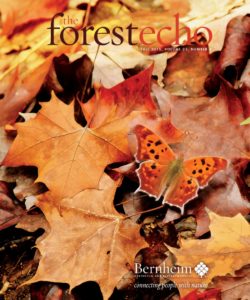The American elm, ulmus americana, can be a large, tough and long-lived tree. That is, it can be all of those things if it doesn’t succumb to Dutch elm disease, a fungus spread by bark beetles. Before Dutch elm disease, the American elm was one of the quintessential urban landscape trees because of its majestic vase shaped architecture, tolerance for urban conditions, and quick growth. In the 19th and early 20th centuries it was so favored that it was overplanted. When the Dutch elm disease spread through North America in the 1930’s there was a massive die off. Many American cities had elm lined streets that quickly lost their canopy. A similar thing is happening today with the die back of ash trees as they become infested with a beetle called the emerald ash borer.

A number of cultivars of American elm introduced into the market in recent years have fair resistance to the Dutch elm disease. It can grow well in a number of different habitats but it prefers the rich, well drained soils of river bottoms and floodplains. Elm seeds, produced in early spring, are usually abundant and dispersed by the wind.
American elm leaves are food for a large number of North American butterflies and moths. Many of them feed mostly or only on elm leaves. Among them is the “question mark” butterfly (Polygonia interrogationis) which graced the cover of Bernheim’s Forest Echo newsletter in the fall of 2015.

The American elm is truly a part of the American landscape. Even in the presence of the Dutch elm disease many of our most cherished city parks and rural landscapes are punctuated by an American elm that stands like an elder statesman among less stately trees.

This painting by American landscape painter George Inness (1825-1894) is titled ‘Old Elm at Medfield’
Want more Vanishing Acts? Click here to view the archive.
Vanishing Acts: Trees Under Threat was developed and produced by The Morton Arboretum in association with the Global Trees Campaign, a partnership between Fauna and Flora International and Botanic Gardens Conservation International.
Funding for this exhibit comes from The Morton Arboretum and the U.S. Institute for Museum and Library Services, Museums for America Grant Program.
Support locally comes from LG&E and KU. Additional support provided by Shepherdsville/Bullitt County Tourism.

